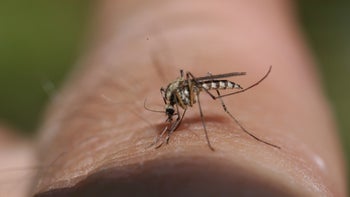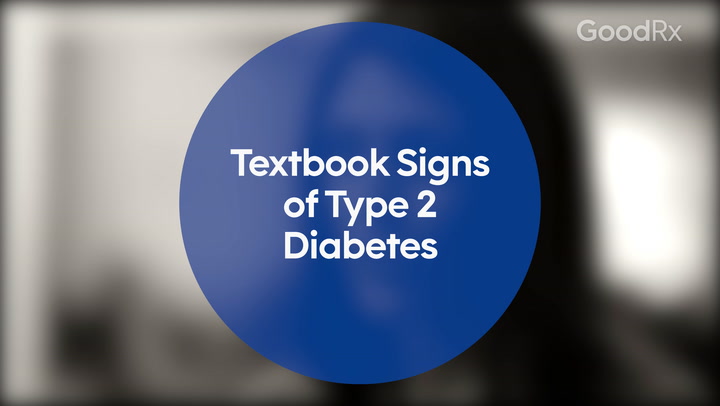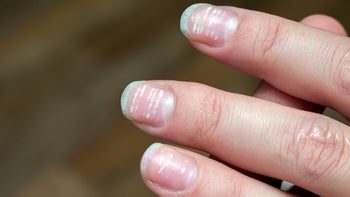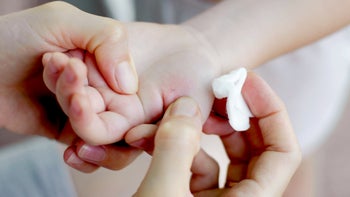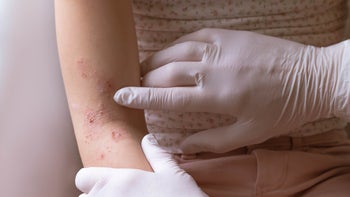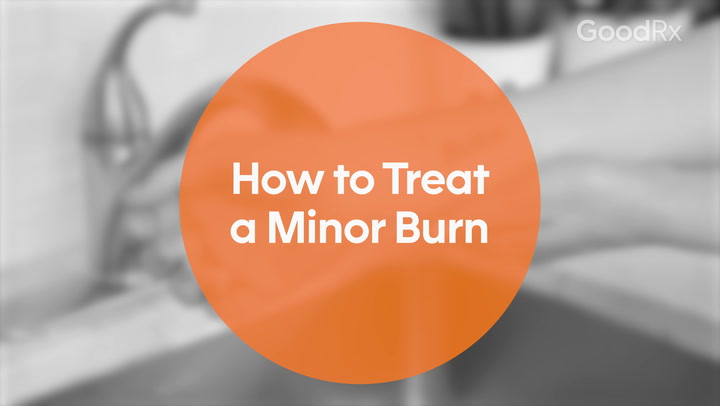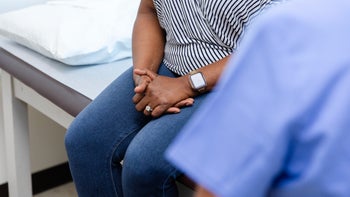
Can You Heal A Sunburn Fast?
Key takeaways:
There’s no way to heal a sunburn fast. But you can take steps to ease your pain and prevent further skin damage.
Cool compresses, moisturizers, and over-the counter medications can help relieve pain and inflammation. They can also help your skin heal from ultraviolet (UV) damage.
It’s important to protect sunburned skin from more UV damage. Sunscreen, UV-protective clothing, and staying out of direct sunlight can protect your sunburnt skin.

Warm weather usually means spending more time outdoors, which can increase your chances of getting a sunburn. Sunburns can be painful, irritating, and take a toll on your skin. If you have a sunburn, you may be wondering how to help your skin heal faster. Here’s what you need to know about how to heal a sunburn fast.
Can you heal a sunburn fast?
There’s no way to heal a sunburn fast. A sunburn is a type of skin damage that’s caused by ultraviolet (UV) light. When your skin is burned, damaged skin cells die and peel off as new, healthy layers of skin cells form underneath. This process takes about a week and there’s no way to speed things up. And there’s no way to reverse skin damage either.
So, you have to give your body time to heal. But there are ways to ease pain, itching, and inflammation from sunburns while you wait. And there are steps you can take to prevent further damage to your healing skin. We’ll review this in detail below.
Search and compare options
How long does it take to fully heal a sunburn?
Mild sunburns usually take about 3 to 5 days to heal. They can cause skin:
Redness
Itching
Peeling
Mild pain or discomfort
These are the most common types of sunburns and only affect the top layer of your skin.
More severe sunburns can take up to 3 weeks to heal because they also affect the deeper layers of skin. This means that your skin has more damage, and it needs more time to heal.
Severe sunburns can cause:
Blisters
Swelling
Redness
Peeling
Pain
Sunscreen isn’t your only option. Learn other effective ways to protect your skin from the sun.
Sunburn vs. sun poisoning: Sun poisoning can feel like a regular sunburn at first, but it’s more serious and may require medical attention. Learn what signs to look for.
How can you protect your scalp from sunburn? It’s easy to forget about protecting the skin on your scalp. Wearing wide-brimmed hats and sunscreen powders or sprays can help.
What should you do first when you have a sunburn?
First, it’s important to know that you won’t notice a sunburn right away. It takes time for sunburn symptoms to develop.
Skin redness is the first sign you’ll notice. It starts to appear about 4 hours after you’ve been burned. Pain, itching, and swelling may start around the same time or a few hours later. All of your symptoms will get worse over the next 24 to 36 hours.
Once you realize you have a sunburn, the most important thing to do is avoid more sun exposure.
Until your sunburn heals, try to:
Stay indoors as much as possible
Stay in the shade and out of direct sunlight when outdoors
Wear loose-fitting clothing that covers your sunburn — UV-protective clothing is even better
Wear a hat if you have a scalp sunburn
Follow these steps until all your sunburn symptoms have gone away.
Can you put sunscreen on a sunburn?
You can put sunscreen on sunburned skin as long as there are no blisters. Sunscreen is better than no protection, but it should be your last option. It’s best to protect your skin from further sun exposure by using other methods — like staying in the shade and wearing clothes that cover your sunburn.
If you have to use sunscreen, you may want to use mineral sunscreen instead of chemical sunscreen. That’s because sunburned skin doesn’t create the same barrier as healthy skin. It’s possible that damaged skin may absorb more chemicals from sunscreen. But there haven’t been studies looking at this.
What’s the fastest way to relieve sunburn pain?
While you can’t make a sunburn heal faster, you can take steps to ease your pain, itching, and other uncomfortable symptoms. Here are some options that can help.
Cool compresses
Cool compresses and cool water can relieve the heat, pain, and inflammation of a sunburn. You can take a cool shower or bath to ease symptoms. For smaller areas, you can also use a cool compress. Don’t put ice or ice packs on your sunburned skin. This can cause more damage to your skin, which means your skin will take longer to heal.
Moisturizing cream
If you don’t have blisters, you can try a moisturizing cream to help soothe itching and discomfort from a sunburn. Pick a moisturizer that’s free of dyes and perfumes (scent), since these additives can irritate your damaged skin. Look for creams with ingredients like:
Aloe
Vitamin E
Avoid ointments that contain petroleum jelly (like Vaseline and Aquaphor). These thick ointments and oil-based moisturizers can block pores and trap sweat. This can make it harder for your skin to heal and increase the risk of an infection.
You should also avoid products with numbing medications like lidocaine and benzocaine. These medications can irritate your skin and slow down healing.
Over-the-counter pain relievers
You can try an over-the-counter (OTC) pain reliever, like ibuprofen (Advil, Motrin) or acetaminophen (Tylenol), to help ease sunburn pain. Be sure to follow the dosing instructions on the product label.
How can you prevent sunburn?
There are several steps you can take to prevent a sunburn. Keeping your skin safe from UV damage can lower your risk of developing skin cancer and keep you pain-free. Here’s what you can do:
Stay out of direct sunlight. Find shade as often as possible when you’re outdoors. Use natural shade from trees or create your own with an umbrella or tent. Try to stay indoors during the middle of the day, when the sun’s rays are strongest. Remember, cloudy days aren’t risk-free. You can still get a sunburn even when it’s overcast.
Cover your skin. Keep your skin covered as much as possible when you’re outdoors. You can wear long-sleeved shirts, pants, and a wide-brimmed hat to protect your skin. If you spend a lot of time outside, consider investing in clothing with built-in UV protection. Don’t forget to protect your eyes with sunglasses with lenses that offer UV light protection.
Wear sunscreen. Always apply sunscreen to any skin that isn’t covered by clothing. Use a sunscreen with at least SPF 30. Reapply sunscreen every 2 hours, and more often if you’re swimming or sweating (since no sunscreen is truly waterproof). Also, make sure your sunscreen isn’t too old. Sunscreens lose their effectiveness after 1 to 2 years, so make sure to buy a new bottle each summer.
The bottom line
There’s no way to heal a sunburn fast. Mild sunburns take about a week to heal, while more severe sunburns can take even longer. There’s nothing you can do to speed up your healing time. But you can use cool water, moisturizers, and OTC pain medications to relieve sunburn discomfort.
Why trust our experts?


References
Burn and Reconstruction Centers of America. (2022). How long does sunburn last? What to know about the short and long-term effects of sunburn.
Ludmann, P., et al. (2024). How to treat sunburn. American Academy of Dermatology Association.
MedlinePlus. (2023). Sunburn.
National Health Service. (2025). Sunburn.
National Institute for Occupational Safety and Health Fast Facts. Protecting yourself from sun exposure. Centers for Disease Control and Prevention.
University of Florida Health. (2023). Sunburn.



